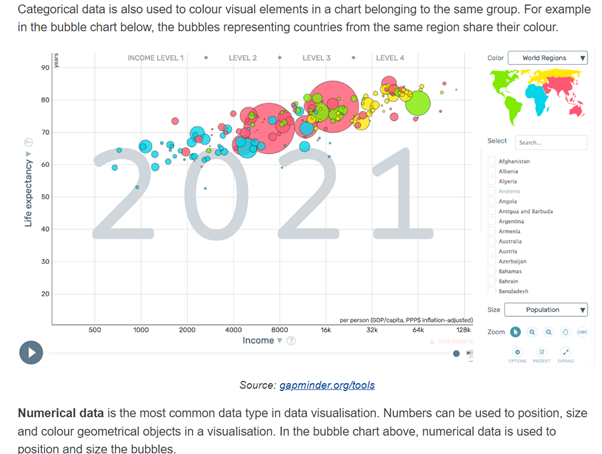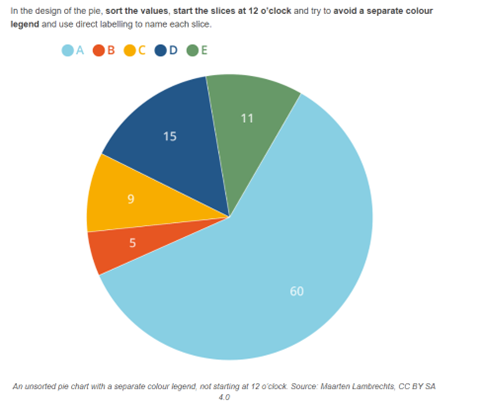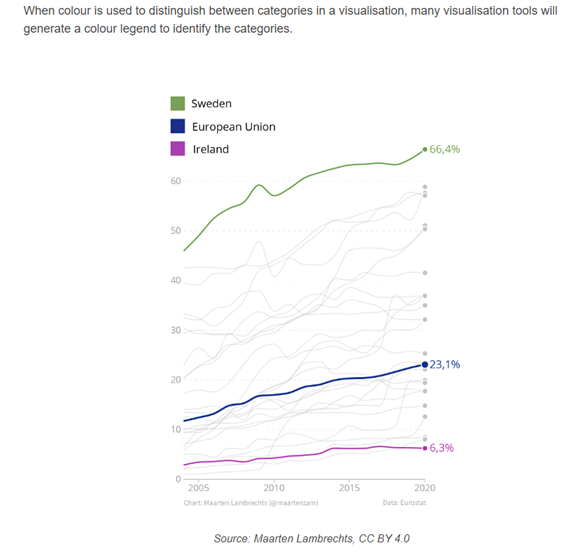Data Visualisation Guide: A powerful resource to learn more about data visualisation
Interview with Dr Simon Steuer, Head of Open Data Services Sector of the Publications Office
Interested in data visualisation? We invite you to explore our Data Visualisation Guide and dive into seven subjects to gain a deeper understanding of various aspects related to visualising data. The guide was created by the Publications Office of the European Union in collaboration with data visualisation expert Maarten Lambrechts. Find out more about the guide’s content and how you can use it in the interview with Dr Simon Steuer, Head of Open Data Services Sector of the Publications Office, who worked on the guide together with colleagues from his team.
Could you tell us more about the guide? What is its purpose and what is in it?
The purpose of the guide is to raise awareness about the importance of data visualisation skills in general and to provide material to upgrade the skills of all those who already embarked on that journey.
The Data Visualisation Guide has seven chapters. They can be read independently from each other and include many real-life examples of data visualisations from the private and public sectors. Examples were found in the traditional and digital media, including social media. Links to the source content is always provided, which allows the examples to be seen in their original context.
Where did the idea to create the guide come from?
We believe data visualisation skills are essential for everybody who is working with data. It is an extremely powerful tool that allows you to find errors in your data quickly, communicate your data and extract information, and make it more understandable for the audience. This is why the data.europa.eu team organised a series of data visualisation training courses from 2019 to 2022 for EU staff. The training material received outstanding reviews by participants, so we wanted to merge it into a single digital publication. We also wanted everyone to have access to the guide, so we made it publicly available on data.europa.eu.

For whom is this guide created?
It is a useful resource for anyone, from beginners to experts. The Data Visualisation Guide contains all the information needed to get started: there are pages about data file formats, about cleaning data, about tools for data visualisation and about designing visualisations.
Independent users with programming skills will find the last two chapters interesting as they contain information about HTML and programming languages.
We already heard that data teams at a big technology company are using the Data Visualisation Guide as a training resource, and we would be happy if it could also become a much-used resource across the EU institutions.

What was the biggest challenge of this project?
We wanted to create the guide in an interactive format. We looked for similar interactive and engaging publications and studied the Regions in Europe publication, published by Eurostat. The main challenge was to restructure the information in a way that would allow the reader both to read the guide as a book and to easily find the topic of their particular need or interest.
Once the publication was developed, our team carried out user testing with many colleagues and further adapted the structure based on their feedback. The final Data Visualisation Guide contains over 400 web pages, which shows how wide and complex this topic is.
And the last question for Maarten Lambrechts, an expert who drafted the Data Visualisation Guide, on what he finds special about the guide.
The guide is special in its set-up; there are so many ways to navigate through it and so many things to learn from it, it can also help you improve the way you communicate your data to the world.
For me personally, the guide is also special because creating it allowed me to document everything I know about data visualisation. So, I thank the Publications Office for giving me the opportunity to make this guide.
Even for me, the author, the guide is an excellent resource: if I need an example of some chart type, or if I forget where to find a certain tool, I can just go to the guide and find what I need!

Data visualisation guide is at your feet. Take the first step.
For more news and events, follow us on Twitter, Facebook and LinkedIn, or subscribe to our newsletter.
